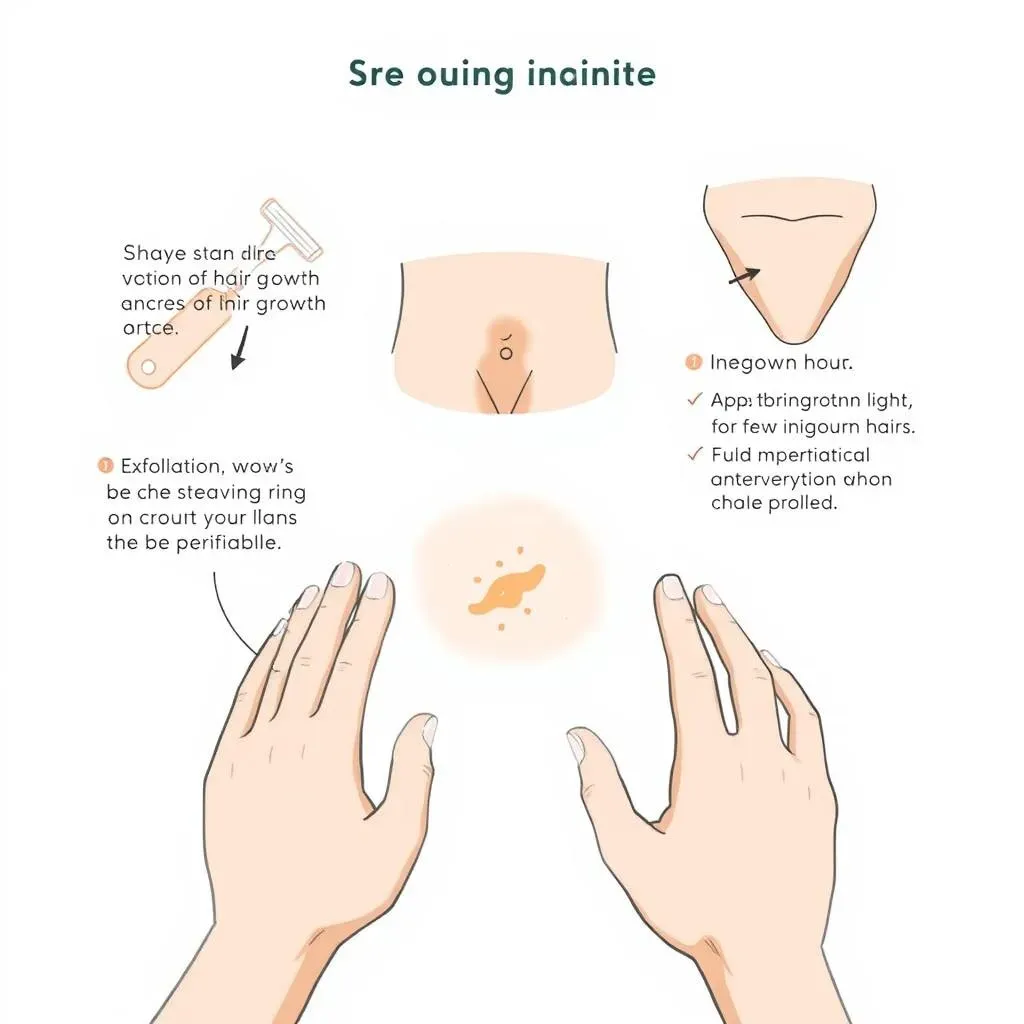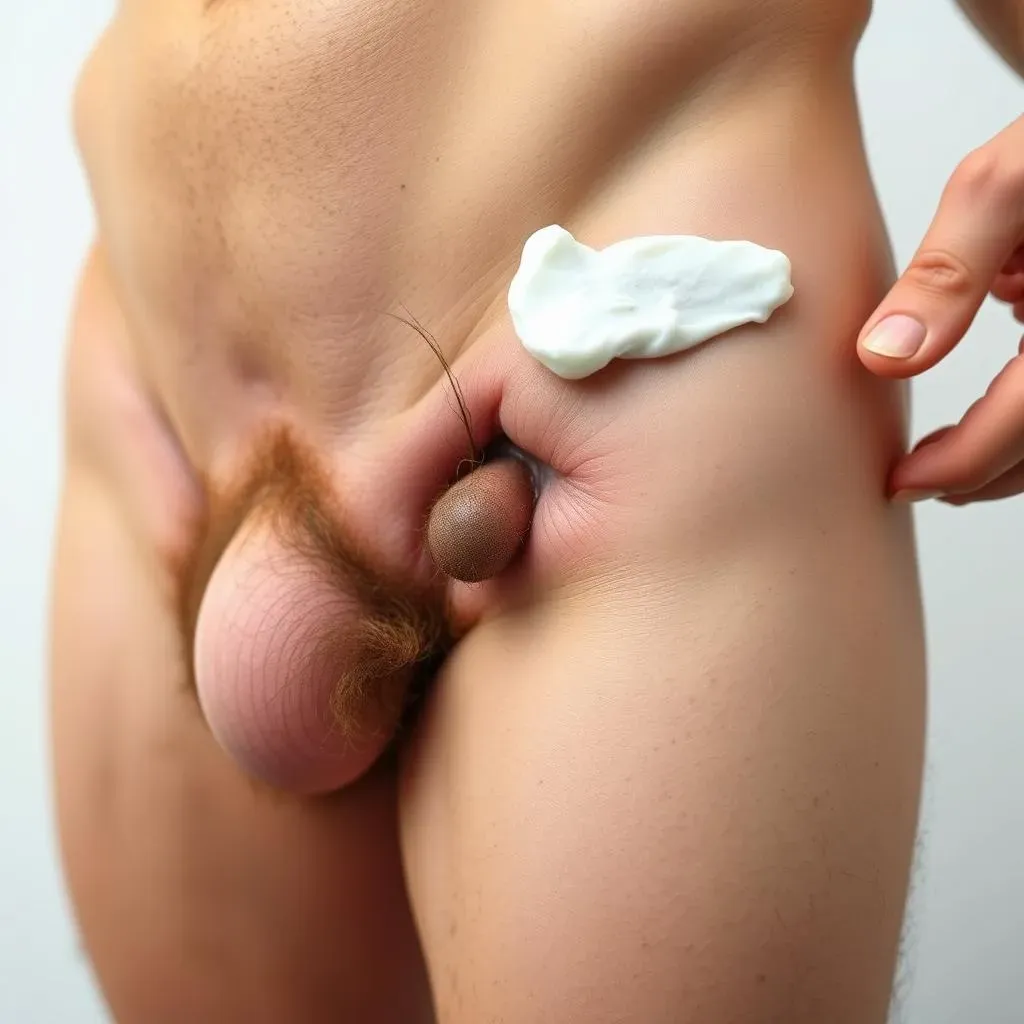Table of Contents
Ingrown hairs on the scrotum can be a painful and embarrassing issue for many men. If you're experiencing redness, swelling, and discomfort in your genital area, you may be dealing with an ingrown hair. Understanding the causes, symptoms, and treatment options for scrotum ingrown hair removal is crucial for effective management and prevention. In this article, we'll delve into the world of ingrown hairs, exploring what causes them, how to identify symptoms, and the various methods for scrotum ingrown hair removal. From home remedies to professional treatments, we'll cover it all. Whether you're looking to alleviate current discomfort or prevent future occurrences, this guide will provide you with the knowledge you need to take control of your skin health. So, let's get started on this journey to smooth, healthy skin, and explore the best approaches for scrotum ingrown hair removal.
Understanding Ingrown Hairs on the Scrotum: Causes and Symptoms of Scrotum Ingrown Hair

Understanding Ingrown Hairs on the Scrotum: Causes and Symptoms of Scrotum Ingrown Hair
Ingrown hairs on the scrotum occur when hair grows back into the skin instead of outward, leading to inflammation, redness, and sometimes pus-filled bumps. This condition is more common in areas where the skin is thicker, such as the scrotum. The primary causes of ingrown hairs include improper shaving techniques, tight clothing, and curly or coarse hair. When the hair is cut too short or pulled out, it can cause the hair follicle to become inflamed, resulting in an ingrown hair.
Symptoms of ingrown hairs on the scrotum may vary from person to person but often include a small, red, swollen bump that can be painful to the touch. In severe cases, the bump may fill with pus, leading to further discomfort. It's essential to recognize these symptoms early on to prevent the condition from worsening.
Causes of Scrotum Ingrown Hair
- Improper shaving techniques, such as shaving too closely or against the grain
- Tight clothing that causes friction and irritation
- Curly or coarse hair, which is more prone to bending back into the skin
- Poor hygiene or failing to exfoliate the skin regularly
Understanding the causes of ingrown hairs is crucial for effective prevention and treatment. By identifying the underlying reasons for the condition, individuals can take steps to avoid future occurrences.
Symptom | Description | Treatment |
|---|---|---|
Redness and swelling | Mild inflammation around the affected area | Warm compresses and gentle exfoliation |
Pus-filled bump | Severe inflammation with pus formation | Antibiotic ointment and possible medical drainage |
Itching and discomfort | Mild to severe itching and pain | Avoid scratching, use soothing creams, and consider oral antihistamines |
Recognizing the symptoms and understanding the causes of ingrown hairs on the scrotum is the first step towards effective scrotum ingrown hair removal. By being aware of the signs and taking preventative measures, individuals can reduce the risk of ingrown hairs and maintain healthy skin.
Home Remedies for Ingrown Hair Removal on the Scrotum

Home Remedies for Ingrown Hair Removal on the Scrotum
Natural Remedies for Ingrown Hair Relief
Ingrown hairs on the scrotum can be painful and uncomfortable, but there are several natural remedies that can help alleviate the symptoms and promote healing. One of the most effective home remedies is the application of a warm compress. Soaking a clean cloth in warm water, wringing it out, and applying it to the affected area can increase blood flow and help draw out the ingrown hair.
Another simple yet effective remedy is exfoliating the skin with a gentle scrub or a warm washcloth. This helps remove dead skin cells and can encourage the ingrown hair to grow outward. It's essential to be gentle when exfoliating, as rough scrubbing can further irritate the skin and worsen the condition.
Remedy | Description | Benefits |
|---|---|---|
Warm Compress | Applying a warm, damp cloth to the affected area | Increases blood flow, reduces inflammation |
Gentle Exfoliation | Using a soft scrub or washcloth to remove dead skin cells | Encourages hair to grow outward, prevents further irritation |
Aloe Vera Gel | Applying aloe vera gel to soothe and calm the skin | Reduces inflammation, promotes healing |
Over-the-Counter Treatments for Ingrown Hairs
For more severe cases of ingrown hairs, over-the-counter treatments can provide relief. Topical creams and gels containing ingredients like hydrocortisone can help reduce inflammation and itching. Additionally, exfoliating products containing alpha-hydroxy acids (AHAs) or beta-hydroxy acids (BHAs) can help remove dead skin cells and prevent ingrown hairs from forming.
It's essential to follow the instructions carefully when using these products and to patch test them on a small area of skin before applying them to the scrotum. Some products can be too harsh for sensitive skin, so it's crucial to choose gentle, fragrance-free options.
- Hydrocortisone cream: Reduces inflammation and itching
- Exfoliating scrubs with AHAs or BHAs: Prevents ingrown hairs by removing dead skin cells
- Tea tree oil: Natural antiseptic and anti-inflammatory properties
Additional Tips for Ingrown Hair Prevention
To prevent ingrown hairs on the scrotum, it's essential to maintain good hygiene and grooming habits. This includes avoiding tight clothing, which can cause friction and irritation, and refraining from shaving or waxing the affected area until the ingrown hair has healed.
When shaving, it's crucial to use a sharp razor and shaving cream, and to shave in the direction of hair growth. This can help prevent the hair from becoming trapped under the skin. Regular exfoliation and moisturizing can also help keep the skin healthy and reduce the risk of ingrown hairs.
"Prevention is key when it comes to ingrown hairs. By taking the time to properly care for your skin and hair, you can significantly reduce the risk of ingrown hairs and maintain healthy, smooth skin."
Professional Treatments for Persistent Ingrown Hairs on the Scrotum

Professional Treatments for Persistent Ingrown Hairs on the Scrotum
Medical Interventions for Ingrown Hairs
For persistent ingrown hairs on the scrotum that do not respond to home remedies, medical interventions may be necessary. One common treatment is the application of topical steroid creams, which can help reduce inflammation and promote healing. In some cases, antibiotics may be prescribed to prevent infection.
In severe cases where the ingrown hair has become infected or formed a cyst, a doctor may need to drain the cyst or prescribe oral antibiotics. It's essential to consult a healthcare professional if you experience persistent pain, swelling, or discharge, as these can be signs of a more serious underlying condition.
Treatment | Description | Benefits |
|---|---|---|
Topical Steroid Creams | Reduces inflammation and promotes healing | Decreases swelling and pain, promotes healing |
Antibiotics | Prevents infection and promotes healing | Clears infection, reduces risk of complications |
Cyst Drainage | Drains infected cysts to prevent further complications | Relieves pain and swelling, prevents infection spread |
Surgical Options for Ingrown Hair Removal
In rare cases, surgical intervention may be necessary to remove an ingrown hair that is deeply embedded or causing significant discomfort. A doctor may use a needle to carefully remove the hair or prescribe a minor surgical procedure to extract the hair follicle.
It's essential to follow all post-operative instructions carefully to ensure proper healing and prevent infection. Surgical removal is usually a last resort and is typically reserved for severe cases where other treatments have failed.
- Avoid shaving or waxing the affected area for several weeks after surgery
- Keep the area clean and apply antibiotic ointment as directed
- Avoid tight clothing and friction to promote healing
"While surgical removal is an option for ingrown hairs, it's crucial to exhaust all other treatments first. Prevention and proper skin care can go a long way in avoiding the need for surgery."
Prevention Strategies for Scrotum Ingrown Hair Removal and Reducing Risk

Prevention Strategies for Scrotum Ingrown Hair Removal and Reducing Risk
Proper Grooming Habits to Prevent Ingrown Hairs
Preventing ingrown hairs on the scrotum starts with proper grooming habits. When shaving, it's essential to use a sharp razor and shaving cream, and to shave in the direction of hair growth. Shaving against the grain can cause the hair to become trapped under the skin, leading to ingrown hairs.
It's also crucial to avoid shaving too closely, as this can cause the hair to be cut too short and increase the risk of ingrown hairs. Additionally, exfoliating the skin regularly can help remove dead skin cells and prevent ingrown hairs from forming.
Grooming Habit | Description | Benefits |
|---|---|---|
Shave in the direction of hair growth | Prevents hair from becoming trapped under the skin | Reduces risk of ingrown hairs |
Use a sharp razor and shaving cream | Helps the razor glide smoothly, reducing irritation | Minimizes razor burn and ingrown hairs |
Exfoliate regularly | Removes dead skin cells, promotes healthy skin | Prevents ingrown hairs, improves skin texture |
Clothing Choices to Reduce Friction and Irritation
Tight clothing can cause friction and irritation on the scrotum, leading to ingrown hairs. Wearing loose, breathable clothing can help reduce the risk of ingrown hairs by minimizing friction and allowing the skin to breathe.
Cotton underwear is a good choice, as it allows for airflow and absorbs moisture. Avoiding synthetic fabrics and tight-fitting pants can also help prevent ingrown hairs.
- Wear loose, breathable clothing
- Choose cotton underwear
- Avoid synthetic fabrics and tight-fitting pants
"Comfortable clothing is not only stylish but also essential for maintaining healthy skin. By making a few simple changes to your wardrobe, you can significantly reduce the risk of ingrown hairs and keep your skin healthy."
Lifestyle Changes for Ingrown Hair Prevention
Maintaining a healthy lifestyle can also play a role in preventing ingrown hairs. Eating a balanced diet rich in fruits, vegetables, and whole grains can help keep your skin healthy and strong. Staying hydrated by drinking plenty of water is also essential for skin health.
Additionally, managing stress through techniques like meditation or yoga can help reduce inflammation and promote overall well-being. By combining these lifestyle changes with proper grooming habits and clothing choices, you can significantly reduce the risk of ingrown hairs on your scrotum.
Lifestyle Change | Description | Benefits |
|---|---|---|
Eat a balanced diet | Supports skin health with essential nutrients | Promotes healthy skin, reduces inflammation |
Stay hydrated | Keeps skin hydrated and supple | Improves skin elasticity, reduces wrinkles |
Manage stress | Reduces inflammation and promotes relaxation | Supports overall well-being, improves skin health |
Conclusion: Taking Control of Scrotum Ingrown Hair Removal
Ingrown hairs on the scrotum can be a frustrating and painful issue, but with the right knowledge and strategies, you can effectively manage and prevent them. By understanding the causes of ingrown hairs, recognizing the symptoms, and employing the appropriate scrotum ingrown hair removal methods, you can alleviate discomfort and promote healthy skin. Remember, prevention is key, so maintain good grooming habits, consider alternative hair removal methods, and prioritize your skin's health. With the tips and treatments outlined in this article, you'll be well on your way to smoother, healthier skin and a reduced risk of ingrown hairs. Take the first step towards a happier, healthier you by implementing these scrotum ingrown hair removal techniques today.
